How resilient is Galveston Bay? Every year brings new challenges: floods, storms, oil spills, fisheries closures, and habitat loss have all threatened Galveston Bay in the past. A healthy, well-rounded ecosystem is a robust ecosystem that can recover from setbacks.
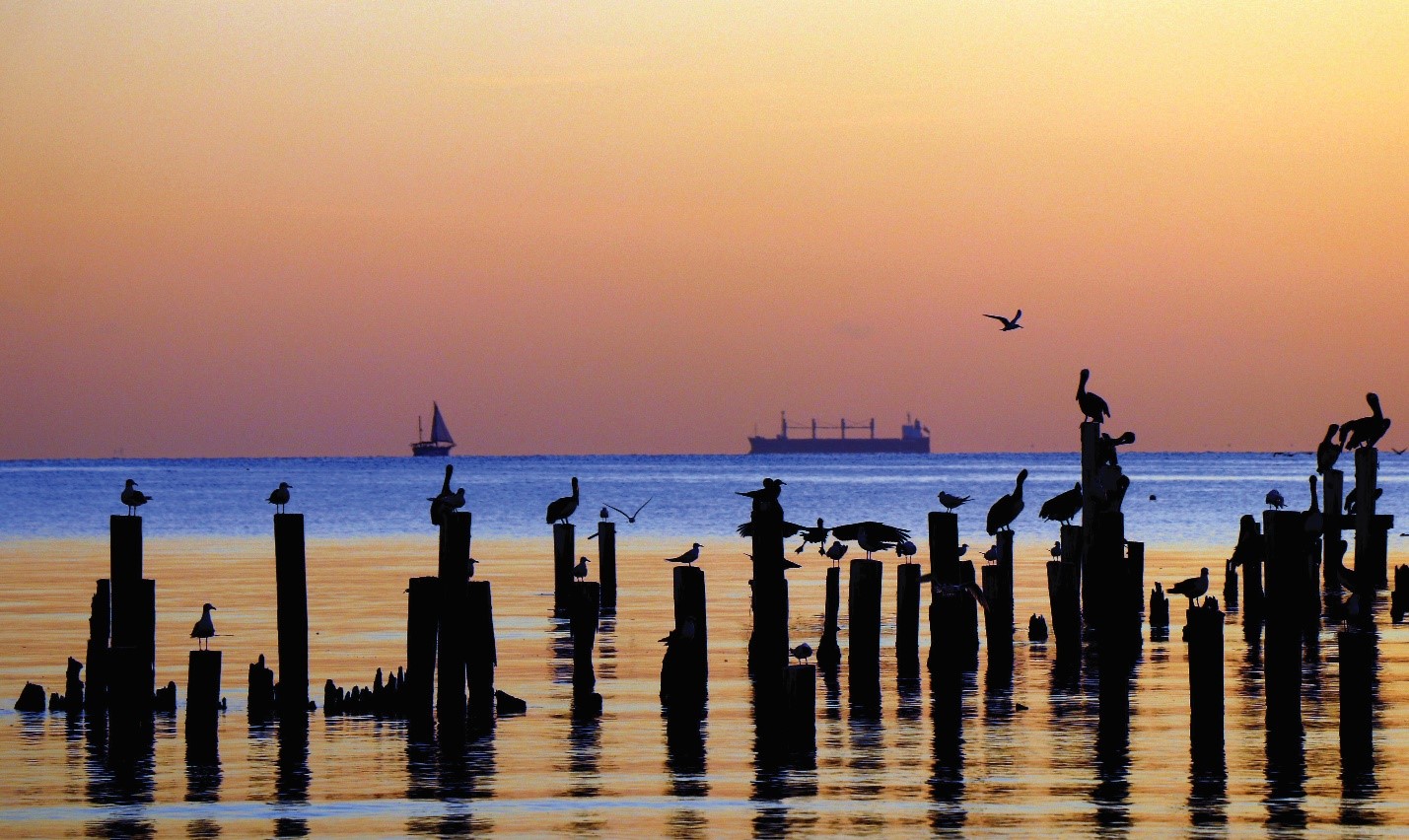
Photo taken by Galveston Bay Foundation volunteer, Gene Fissler perfectly captures the importance of the Bay.
In 2018, the data included in the Galveston Bay Report Card, reflect a full year after record-setting rainfall from Hurricane Harvey followed by a long period of low salinity levels in the bay. HARC and Galveston Bay Foundation were anxiously watching out for changes in habitat, fish and birds, water quality and human health advisories to see how the Bay recovered. And, we are happy to see that Galveston Bay is showing how resilient it still is.
This year, Galveston Bay was graded a C in overall health, which has been consistent since the card’s inception in 2015. With a catastrophic event such as Hurricane Harvey, the short-term damage for humans and ecosystems was disastrous but many components of the of the Galveston Bay ecosystem began to show signs of recovery.
The 2019 grades in each of those categories were scientifically determined to be as follows:
- Wildlife: Galveston Bay earned an overall grade of a D. There was specific species improvement with the blue crab population improving from an F to a D, which could be a result of the removal of abandoned crab traps, improved fresh water inflows, higher recruitment (the number of crabs that survive as juveniles and enter the fishery as adults) and habitat improvement. A new indicator this year describing oyster populations shows signs of short-term stabilization in 2018. Some colonial waterbirdspecies such as royal tern and black crowned night heron exhibited population increases.
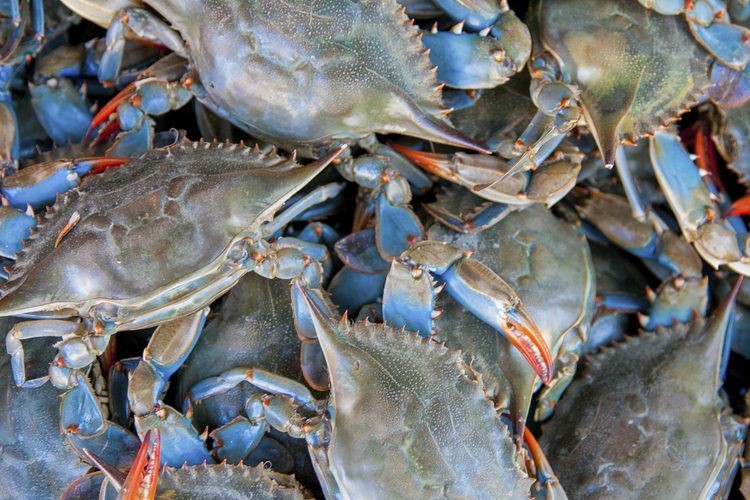 Blue crab populations saw a moderate increase this year.
Blue crab populations saw a moderate increase this year.
- Pollution Events and Sources: With continued incremental improvement, this category is a B grade. More than 230 oil spills are reported on average every year in Galveston Bay with most being less than five gallons. The oil spills subcategory remains at a B grade for 2018. The grades for toxics in sediment in the Houston Ship Channel and Galveston Bay remained the same.
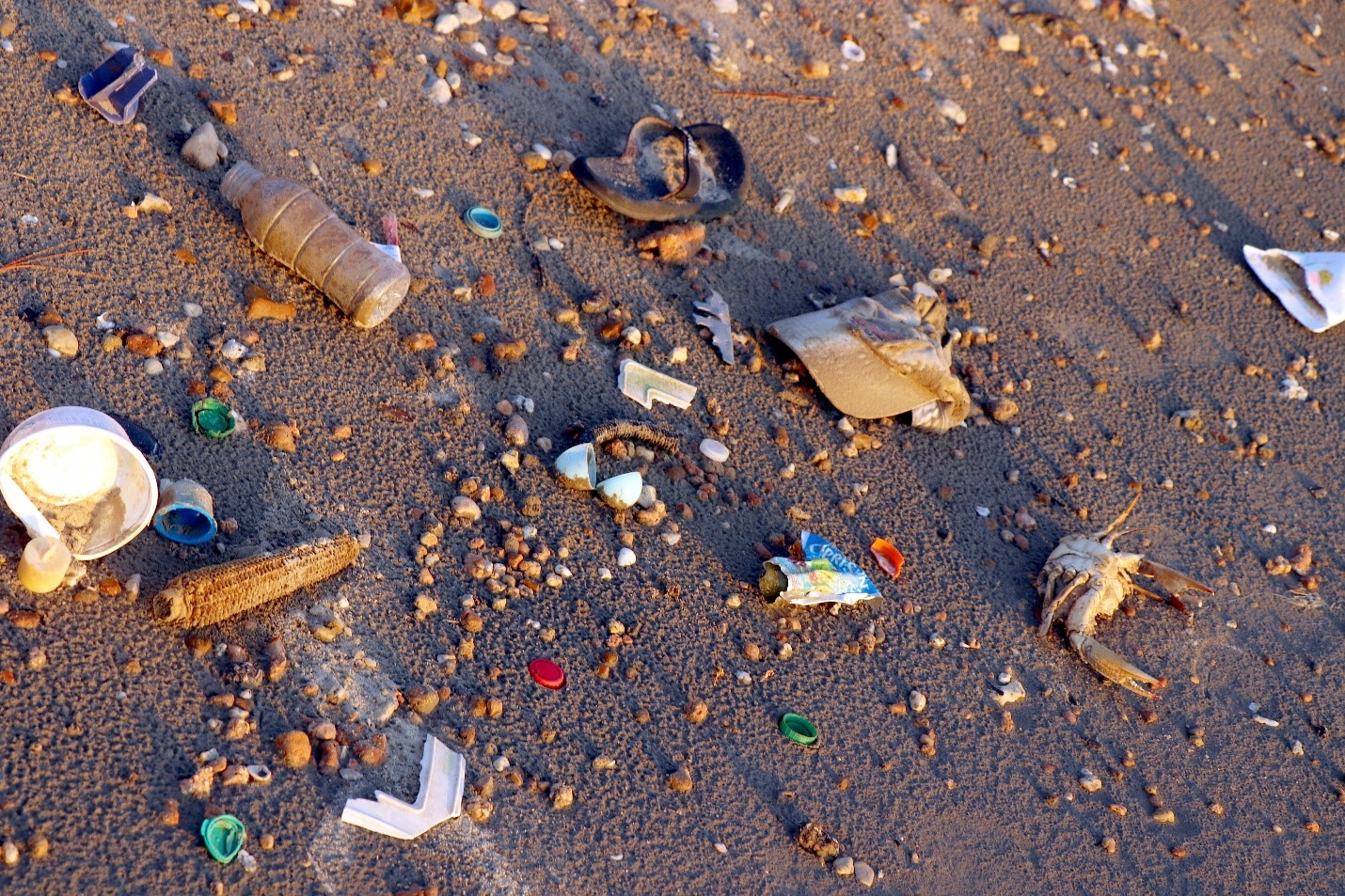
Litter and trash on the shoreline of Galveston Bay.
- Human Health Risks: Although the grade remained the same overall, earning a C again this year, bacteria concentrations in area bayous showed changes this year in specific watersheds. Chocolate Bayou declined from an A to a C, Dickinson Bayou declined from a B to a C and West Bay watershed declined from an A to a B. However, Cedar Bayou improved from a C to an A, possibly as a result of the success of the Watershed Protection Plan. Overall, the Bay received a C for Human Health Risk again this year, earning an A for the Bay and a B for rivers and bayous in the subcategory of Recreation Safety. Seafood Consumption Safety earned a C for the Bay and a D for rivers and bayous.
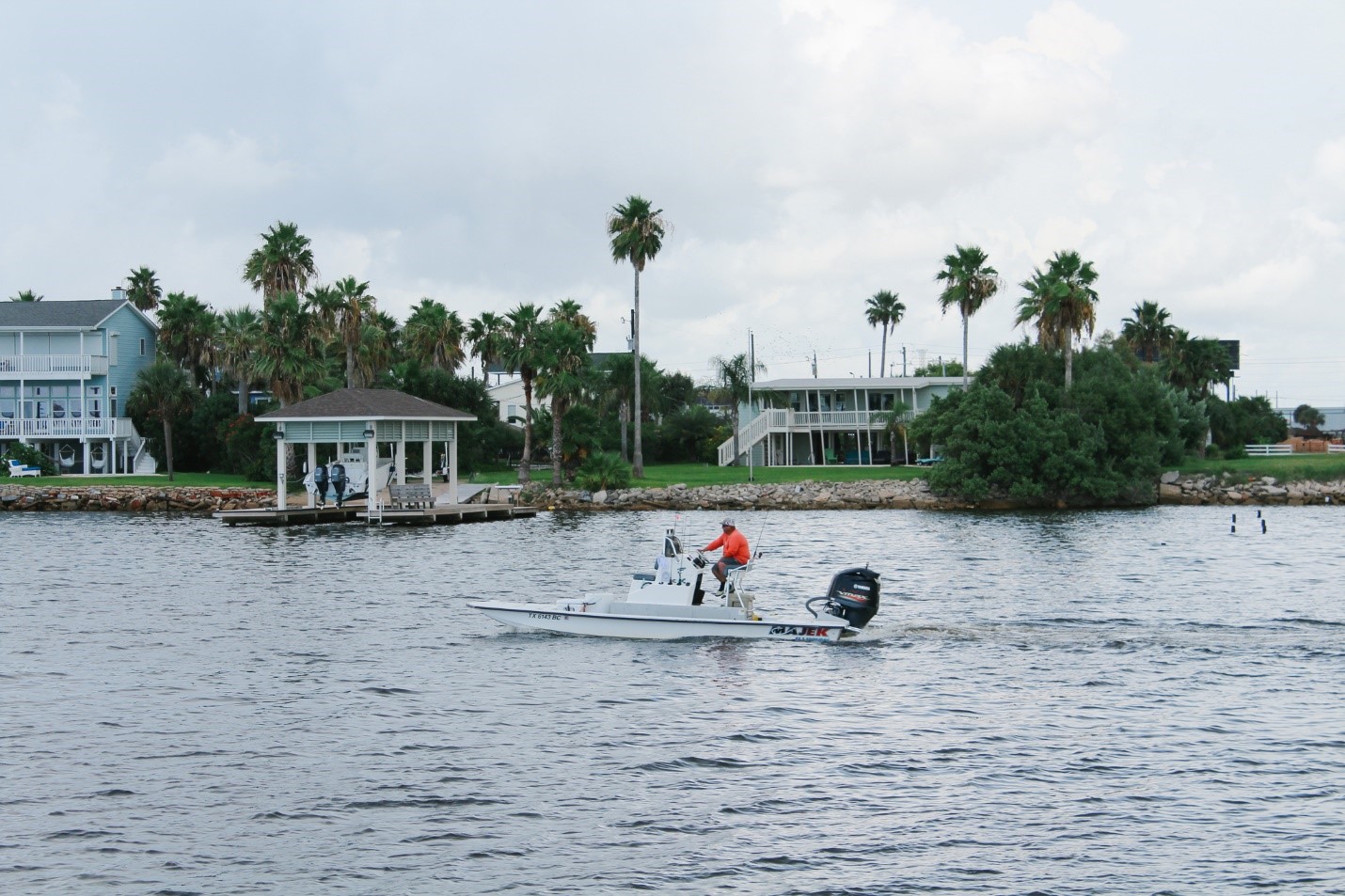 A boater enjoys the Bay.
A boater enjoys the Bay.
- Habitat: An overall grade of a D was assigned, and the subcategory of freshwater wetlands received a D as well. The wetlands subcategory received an incomplete grade last year due to a lack of updated data. This year, the grade moved to a D with an asterisk as this grade is an estimate based on the best available data, as a key data set from NOAA has not yet been released. Wetland loss continues to be a major concern as wetlands retain and filter water in flood situations and, in addition to serving as nature’s way of accommodating floodwaters, they retain nutrients, recharge our aquafers, provide habitat, serve as a natural buffer for pollutants and more.
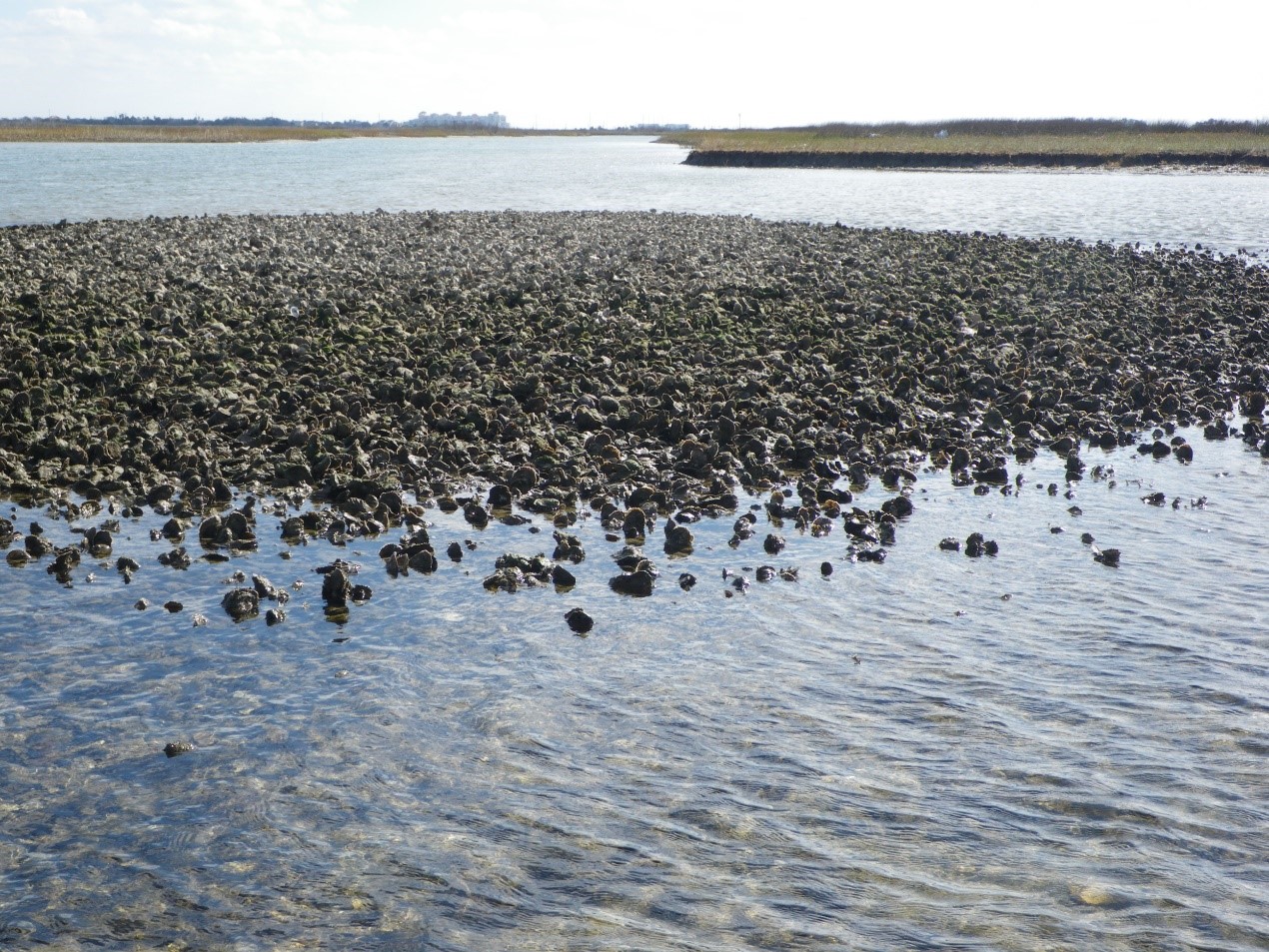 Oyster reefs in the Bay.
Oyster reefs in the Bay.
- Water Quality: This category declined from an A to a B this year which can be attributed to changes in phosphorous concentrations in various watersheds. More specifically, many sub-watersheds of Galveston Bay (Clear Creek, West Bay, Austin-Bastrop Bayou, Greens Bayou and Trinity sub-bay) saw declines in “Phosphorus” grades which are most likely attributed to non-point source pollution. Addicks Reservoir was an exception, improving its grade from a D to a C.
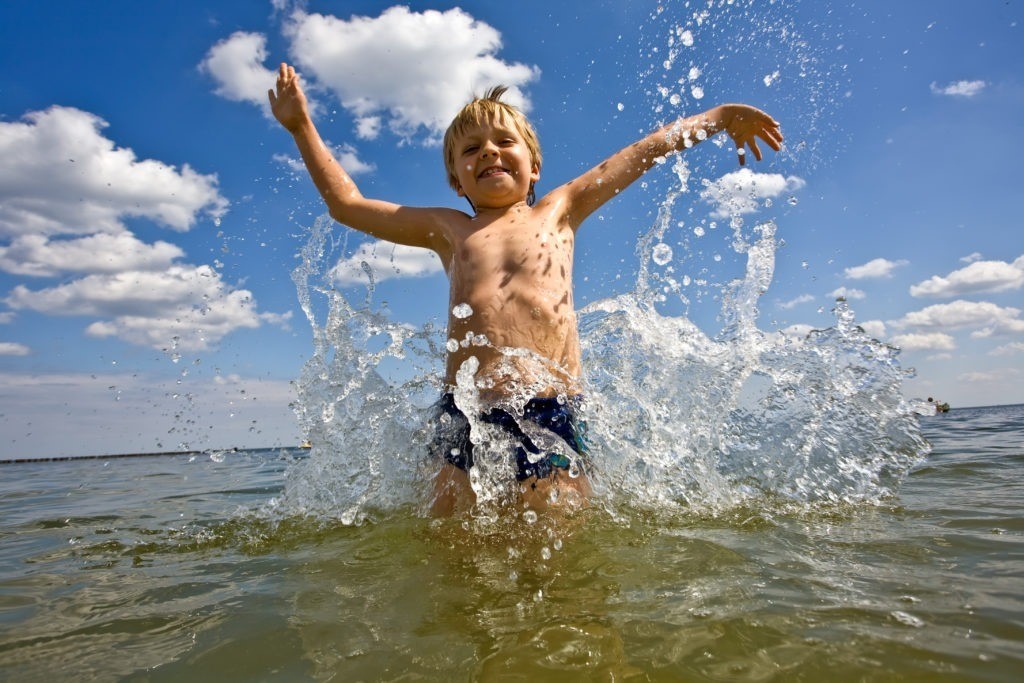 Enjoying the Bay is for everyone.
Enjoying the Bay is for everyone.
- Coastal Change: While the overall grade remained a C, it should be noted that the sub-category of “Sea Level Rise” remained an F, while “Water Temperature” and “Water pH” each received an A. The issue of flooding in our region is multipronged. The episodic threat of storm surge always looms, and the hazard of large-scale, rain-driven flood events on the land are becoming more and more routine. Land use decisions that take away natural habitats equipped to deal with excess runoff during floods also greatly contribute to this issue. Saltwater wetlands are a great buffer for storm surge but are at risk due to rising sea levels and subsidence. Also, as more people are moving to the Houston-Galveston region each year, issues such as sea level rise not only affect the Bay ecosystem, but public safety, public infrastructure and private property.
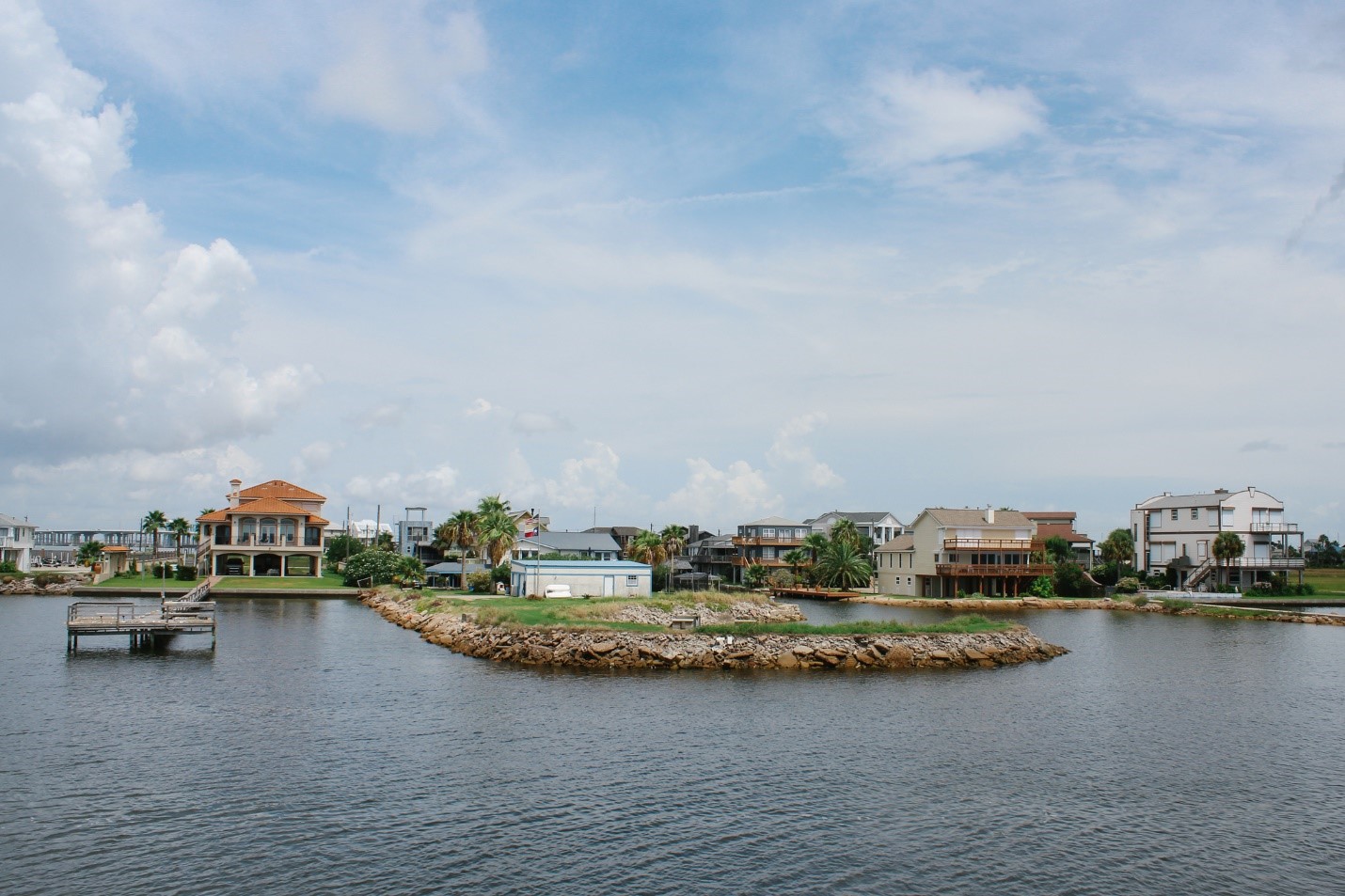 Coast change continues to be monitored for citizens and the Bay.
Coast change continues to be monitored for citizens and the Bay.
Galveston Bay is among the most productive ecosystems on the Gulf Coast and a vital natural resource for recreation, tourism and commercial fisheries. The area is also home to regional ports and a growing metropolitan population while serving as a hub for the manufacturing and refining of chemicals and petroleum products, making a significant economic contribution to the state of Texas. Over the years, Galveston Bay Foundation and HARC have partnered to collect input from thousands of community members to ultimately bring awareness to the issues affecting Galveston Bay and inspire action to evoke positive change.
“Our research establishes an information framework to identify new management strategies and to build support for solutions that can improve the health of the Bay,” said the Houston Advanced Research Center’s President and CEO, Lisa Gonzalez. “The 2019 Report Card is a summary of indicator data representing the last year. The Report Card gives the public a way to look at the effects of acute and chronic stressors so that we can understand how our activities on land influence our bay and bayous. This information will help us to identify a path forward to increase the resilience of the Bay for generations to come.”
In addition to the grades, the Report Card encourages the public to contribute to the improvement of the health of the Bay through individual actions: conservation activities such as minimizing fertilizer use, properly disposing of pet waste, reducing plastic usage and installing rain barrels to conserve water. Another way to get involved is through the various clean-up efforts held throughout the year including an upcoming clean-up hosted by Galveston Bay Foundation and Adopt-A-Beach in partnership with the Texas General Land Office and Port Houston at Morgan’s Point on September 21st.